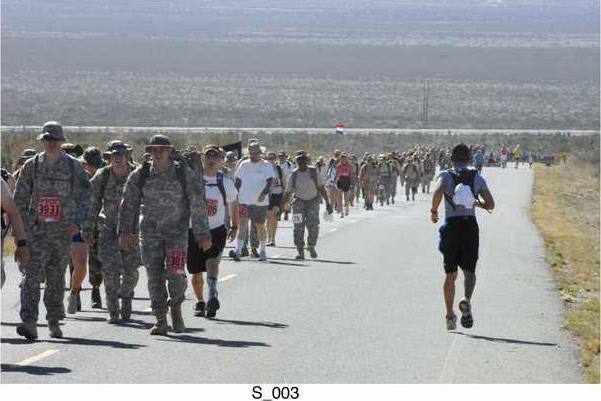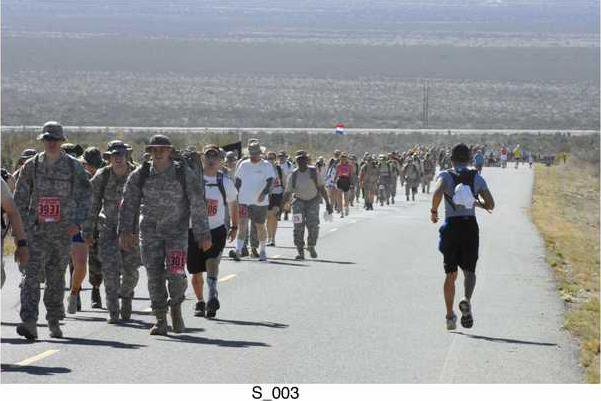WHITE SANDS MISSILE RANGE, N.M. — On April 9, 1942, tens of thousands of American and Filipino soldiers surrendered to Japanese forces. They were marched for days along a 65-mile grueling route in the scorching heat through the malaria-infested Philippine jungles, with limited rations and no medical support. Thousands died. Those who survived faced the hardships of a prisoner of war camp.
Air Force Capt. Wayne Holbeck, son of Elroy and Doris H. Holbeck of Rincon, along with more than 4,400 participants, paid tribute to this group of brave soldiers who defended the islands of Luzon, Corregidor, and the harbor defense forts of the Philippines during World War II, during this year’s 19th Annual Bataan Memorial Death March.
The sandy desert trails and washes and mountainous Chihuahuan Desert terrain, with an elevation of 4,100 to 5,300 feet, along the 15.2-mile honorary march or the 26.2-mile competitive march route wasn’t a feat for the weak at heart and a challenge for all who participated.
The march was broken down into two categories-the honorary march, for those who want to participate but do not want to attempt the longer, more difficult route; and the competitive march, for military and civilian teams and individuals in either “heavy” or “light” divisions. Marchers entered in the “heavy” division category carry a 35-pound rucksack. Holbeck competed in the 26.2-mile route.
“Nothing is easy about this race. The terrain is difficult, there is no shade, and it will be the longest distance that I have ever run,” said Holbeck, who graduated in 1984 from Effingham County High School and in 1996 from Abilene Christian University, Texas.
Holbeck, an air battle manager with the 116th Operational Support Squadron at Robins Air Force Base and the others who came from across the U.S. and several foreign countries, were honoring the sacrifices of the Bataan soldiers by attempting to relive some of what the Bataan Soldiers went through. But for the marchers to survive the grueling course while braving the scorching heat and high altitude of the New Mexico desert, they had to be prepared.
“I prepared for the march by mixing long and short runs,” he said.
Since the first march, which was held in 1989 to mark a page in history that included so many native sons and affected many families in New Mexico, the march has grown from about 100 to thousands. The marchers come to this memorial event for many reasons-personal challenge, the spirit of competition or to build esprit de corps in their unit. Some march in honor of a family member or a particular veteran who was in the Bataan Death March or was taken a prisoner of war by the Japanese in the Philippines.
“I participated in this march as a way to memorialize and thank those soldiers who suffered and sacrificed so much for our great nation,” Holbeck said.
Many of those brave soldiers never made it to their destination in 1942, but thanks to Holbeck and the other participants, they will never be forgotten.








